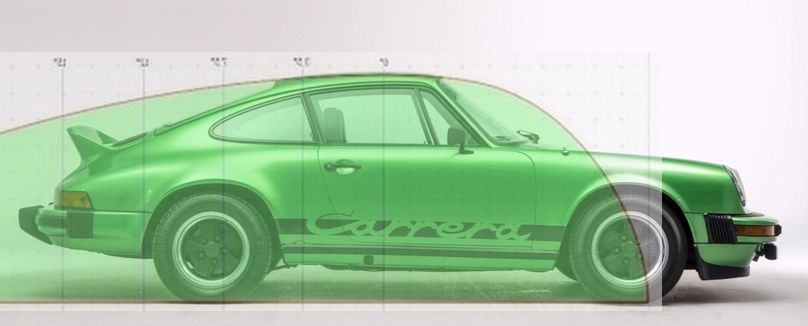I enjoyed the video, thank you for posting it.
For reference a post of mine from 2017 questioning some of the same things.
You need to click the link to read the whole post including charts from a another forum reference.
https://ecomodder.com/forum/showthre...s-34840-4.html
Quote:
Originally Posted by kach22i

I agree with what everyone else has been saying about reducing Cd and lift if you can. I'm offering this example for reference because it is so iconic and well tested.
Sourced base image below because I could not find the one out of a book Aerohead scanned into his forum gallery which shows a template overlay.
https://en.wheelsage.org/porsche/911...ctures/o3rqv5/
Then I overlaid the one of the forum's AeroTemplates from here ( not sure which page):
http://ecomodder.com/forum/showthrea...ion-21952.html
The combination:
Aerodynamics by George Kachadoorian | Photobucket

This overlay was done to provide some context for the chart quoted below, which shows a lowering of Cd and lowering of lift with ducktail.
Spoilers: front and or rear - Page 2 - Pelican Parts Technical BBS
Going back to one of my first comments about getting the rear spoiler to fill out the template, it looks as the Porsche 911 RS kept it just below that line for some reason unknown to myself.
Maybe your testing can examine what happens when you fill that gap in your comparative Honda Civic project. At what point does the Cd stop being lowered and starts going back up.
If your 3D printer does not allow for curved or wavy top edge of rear spoiler, then try a square notched or comb filter pattern, something like a bread knife edge.
The point would be to see if there is less drag when the vortex coming off the Gurney flap is broken down to smaller elements and is less planar or a constant cylinder of rolling air mass.
836 Gurney flaps - Aerodynamics - Civil Engineering Handbook
 Concept of wavy spoiler: Distribution of energy verses concentration of energy, which may help control oscillations.
Concept of wavy spoiler: Distribution of energy verses concentration of energy, which may help control oscillations.
If one "feathers" the edges as found in nature ( bird feathers, whale fin tubercles) just to see what happens, there might be a nice surprise - or not.
Be brave, take a chance. Have no regrets because each failure is just another step in learning, and learning is a life long path - or at least it should be.  EDIT:
EDIT: One more chart.
Spoilers: front and or rear - Pelican Parts Forums

The 3.3 turbo tail is different than the spoiler type Ducktail, it extends out and is sometimes called a Teatray or Whaletail.
Similar to the below shown on a later model.
Spoilers: front and or rear - Pelican Parts Forums

I should note that there is less drag and less lift with the type shown on the red car (tray/wing) verses the earlier green car (duck).
If you go to Bonneville you are more likely to see rear mounted horizontal extensions than near vertical ones for the same reasons. Each one attempts to fill out the Aero-template in it's own way. |
With the Jaguar and Tesla shown in the video, is air attachment of tufts absolute proof of the lowest drag possible?
Perhaps the very slight imperfection of a physical medium that has mass/weight and surface area (the yarn tuft) has not been overwhelmed by the ever so slight pressure differences.
It is their own weight that is holding them down (
gravity) and not air pressure or air flow?
In a 1930's NCAC video posted earlier this month the demonstrator using a small wind tunnel used a wand with what looked like long stringy bird feathers much lighter and delicate than a yarn tuft, and this allowed him to actually show vortex formation around a cube.
Are yarn tufts infallible and indisputable?
Did these blimp derived shapes of the 1930's use yarn tufts at all to arrive at their shapes or to collect data?
Do present day automobile manufactures with wind tunnels use yarn tufts?
If yarn tufts are 90% accurate, that would leave 10% on the table, room for improvement.
How close to idea are yarn tufts?
EDIT-1
Looks like back in 2001 NASA was using polyester not wool, and glued not taped with very specific procedures and requirements such a syringes to keep the glue glob size down.
PDF Download:
https://www.google.com/url?sa=t&rct=...Ft9VnAkyPjVl77
.................................................. .....................................
EDIT-2

Getting an error on providing a link for the above image, found via Google image search with phrase "aerodynamic tuft accuracy".
I assume it's showing reaction sensitivity or response times of various tuft filaments.